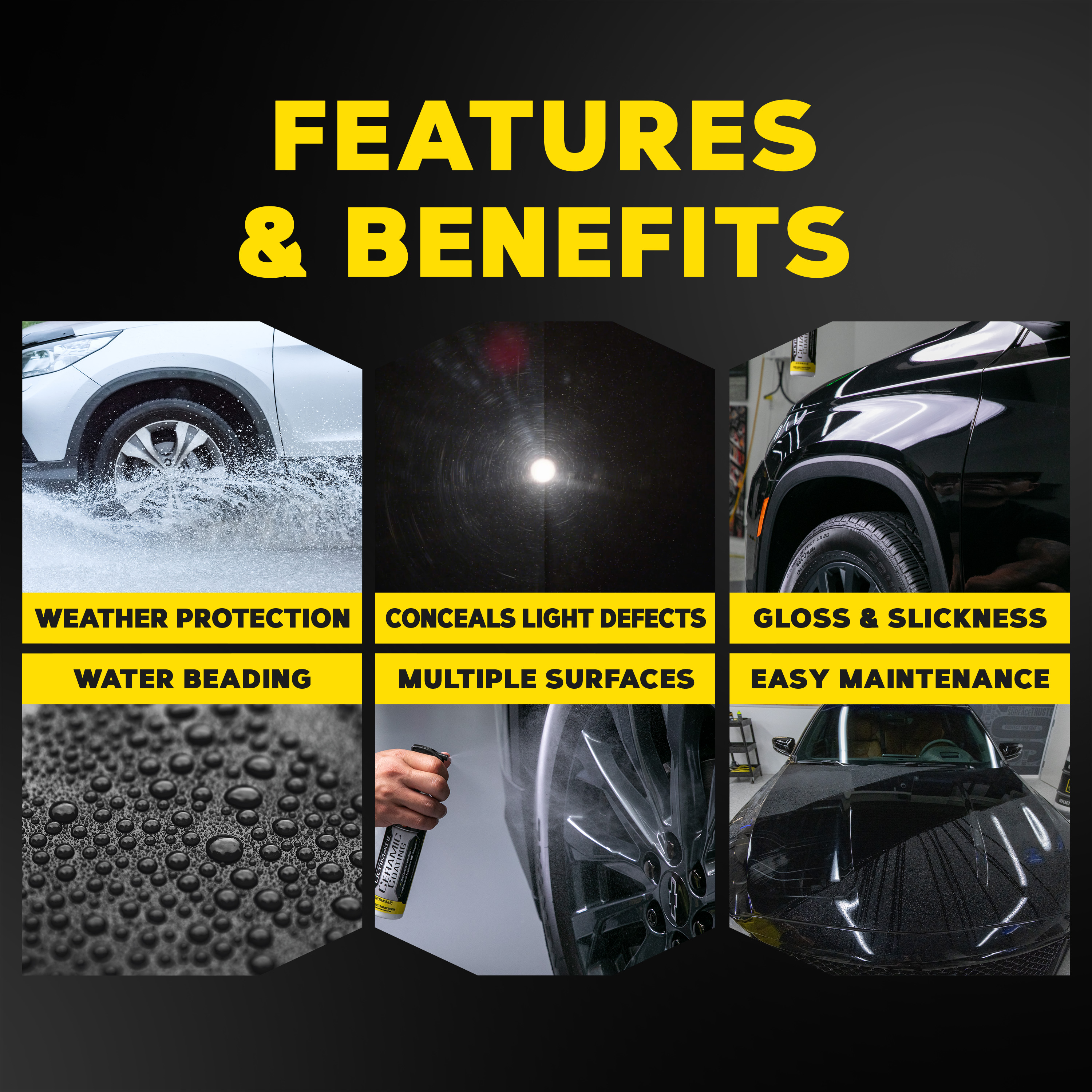Why Ceramic Layer Is the Ultimate Solution for a Remarkable Finish
Ceramic covering has become a leading service for those looking for a flawless finish for their lorries, thanks to its amazing durability and safety functions. This advanced liquid polymer not only bonds seamlessly with manufacturing facility paint but additionally supplies a formidable barrier versus common risks such as scratches, UV rays, and ecological pollutants. Furthermore, its hydrophobic residential properties simplify maintenance while enhancing aesthetic allure. Comprehending exactly how this innovation compares to typical approaches and discovering its application subtleties can disclose even more regarding its value. What factors absolutely established ceramic covering apart?
What Is Ceramic Finishing?

When used correctly, ceramic layer produces a hydrophobic surface that pushes back water and dust, making it less complicated to cleanse and preserve. Unlike standard waxes or sealants, which usually provide short-term security, ceramic finishes can last for a number of years, relying on the product quality and application technique. The procedure of applying ceramic covering requires meticulous preparation, including complete cleansing and sometimes repaint improvement, to guarantee optimal bonding and effectiveness.
Ceramic layers are not limited to automobile surface areas; they can also be utilized on various materials, consisting of glass, metal, and plastics, giving a functional remedy for enhancing protection. Overall, ceramic coating represents a significant improvement in surface security technology, integrating both functional and visual benefits for a vast array of applications.
Advantages of Ceramic Finishing
While many surface area security choices exist, the advantages of ceramic finish stand apart as a result of its distinct residential properties and lasting performance. One of the primary benefits is its outstanding longevity. Ceramic Coating Philadelphia. Unlike traditional wax or sealers that require constant reapplication, ceramic layers supply a resilient layer that can last for numerous years, considerably minimizing upkeep initiatives
One more significant benefit is enhanced defense versus environmental pollutants. Ceramic coatings create a hydrophobic surface area that drives away water, dirt, and numerous contaminants, making it easier to clean up. This feature not only maintains the vehicle's look yet likewise minimizes the threat of rust and oxidation, especially in rough weather.
In addition, ceramic coatings offer premium resistance to UV rays, preventing fading and deterioration of paint over time. This UV defense is critical for keeping the visual value of surface areas and vehicles revealed to guide sunshine.
Additionally, the shiny finish accomplished with ceramic covering enhances the overall visual appeal, providing surface areas a showroom-quality luster. On the whole, ceramic finishes represent a substantial innovation in surface area protection modern technology, providing enduring advantages that accommodate both aesthetic and useful requirements.
How It Works
Recognizing the science behind ceramic finishings exposes just how they supply such remarkable protection and durability. At its core, a ceramic coating is a fluid polymer that chemically bonds with the lorry's manufacturing facility paint.
The application procedure entails multiple actions, consisting of surface prep work, which is important to accomplishing ideal bond. Once used, the covering undertakes a healing procedure, during which it hardens and develops a semi-permanent bond with the paint surface area. This bond is what distinguishes ceramic layers from traditional waxes and sealers, giving a longer-lasting protective obstacle that can endure for several years.
Additionally, the thickness of the coating can improve its protective qualities, guaranteeing that it can endure rough conditions. Inevitably, the scientific research of ceramic finishes integrates sophisticated materials with cutting-edge application techniques to supply an unparalleled degree of protection and aesthetic improvement for automobiles.
Contrast With Standard Methods
The benefits of ceramic finishings come to be especially apparent when compared to traditional paint security official statement methods such as waxes and sealers. While waxes offer a short-lived luster, generally lasting a couple of weeks to a couple of months, ceramic coverings offer a durable safety layer that can withstand for several years. This toughness considerably lowers the frequency of reapplication, making ceramic coatings a more affordable option in time.
Additionally, traditional methods frequently require substantial prep work and numerous applications to achieve a sufficient level of defense. On the other hand, ceramic coatings bond at a molecular level with the automobile's surface area, creating a robust shield versus environmental contaminants like UV rays, acid rain, and road salts. This bond enhances the lorry's resistance to scratches and swirl marks, which are common with typical waxes and sealants.
Additionally, the hydrophobic residential properties of ceramic coatings drive away water and dust, resulting in much easier cleaning and maintenance. In comparison, wax and sealant-treated surfaces can attract gunk, demanding more constant washing - Ceramic Coating Philadelphia. Generally, ceramic finishings not only offer remarkable security however also provide a more visually appealing and long-lasting surface, developing them as the recommended option for critical car proprietors
Application and Maintenance Tips

Utilizing a foam applicator, use the layer in small sections, following the supplier's guidelines relating to thickness and overlap. Allow sufficient treating time between layers, generally 24 hours, to make sure appropriate bonding. After application, it is crucial to prevent exposure to water or harsh aspects for at the very least a week to enable the finish to fully treat.
For upkeep, clean the vehicle regularly with pH-balanced soaps and prevent rough products. Touchless automobile cleans are recommended to minimize scraping. In addition, using a ceramic upkeep spray can improve the finishing's hydrophobic homes and longevity. Routine inspections for any type of signs of wear will aid preserve the finish's honesty and maintain that excellent finish.
Conclusion
In verdict, ceramic coating arises as a remarkable choice for accomplishing a flawless auto surface. By forming a robust bond with factory paint, ceramic covering efficiently guards versus scratches, UV rays, and ecological impurities.
